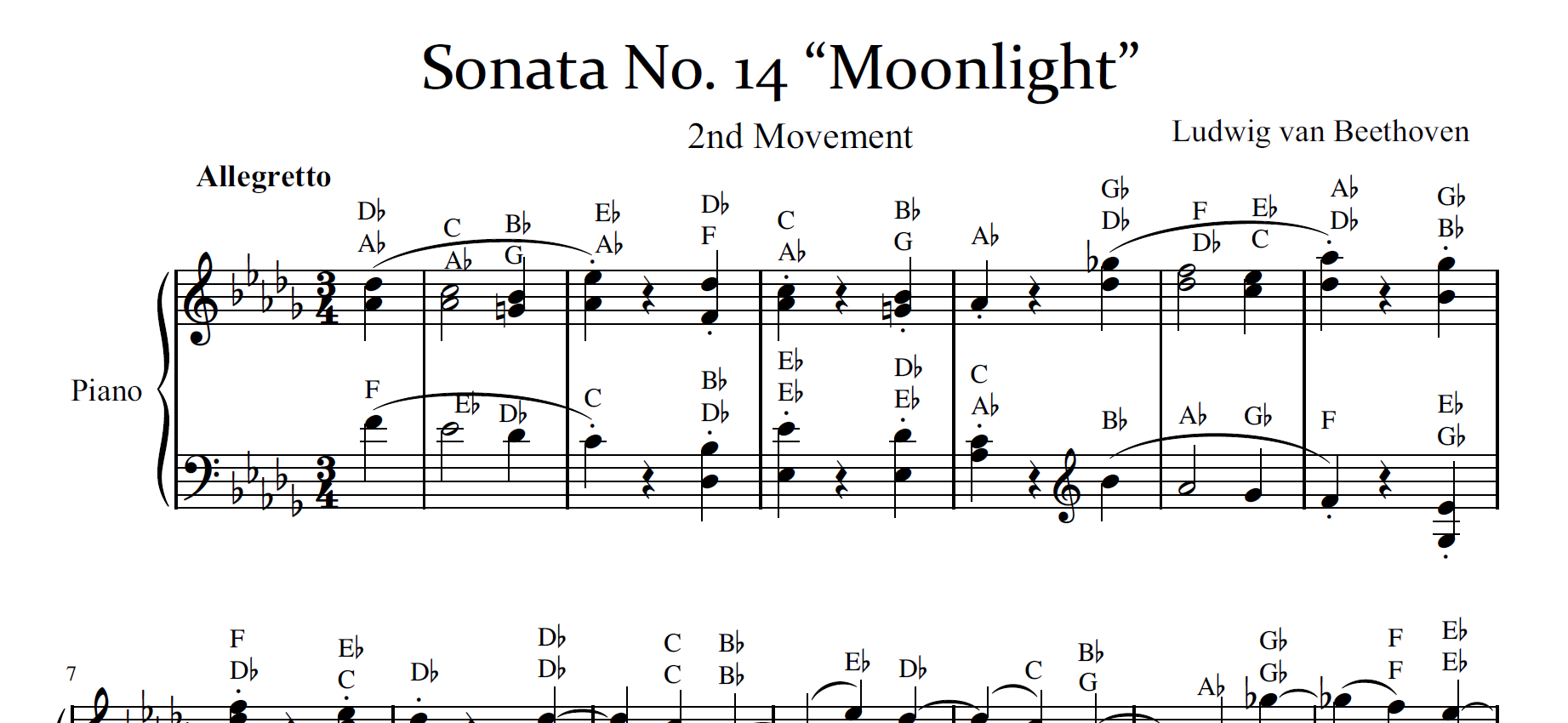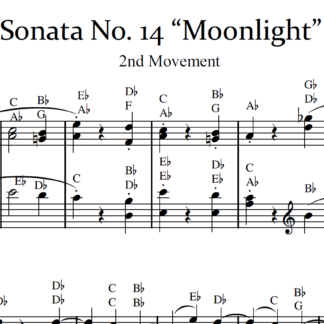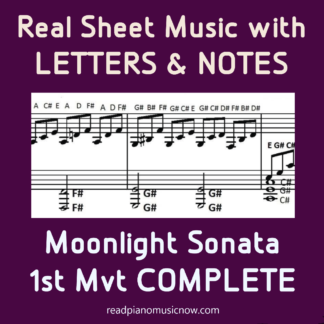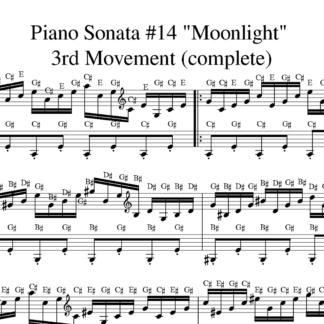
Just Added: SECOND (2nd) Movement of Beethoven’s Moonlight Sonata – Sheet Music with Letter-Names included.
This completes the full set of 3 movements of “Moonlight Sonata” (Piano Sonata No. 14) — now available in our online store. (Each movement can be purchased separately.)
Hello and welcome to ReadPianoMusicNow.com. My name is Kent D. Smith.
Today I’m happy to announce publication of the Second Movement of Beethoven’s “Moonlight Sonata” sheet music with letter-names included, on this website.
This SECOND MOVEMENT completes the set of all 3 movements of Beethoven’s famous Piano Sonata No. 14, a.k.a. “Moonlight”, as featured in our online Sheep Music Shop (on this site).
Which MOVEMENT(S) of Moonlight Sonata are you looking for?
Let’s examine the three movements of Moonlight Sonata (Piano Sonata No 14), so that you can determine which ones you might be interested in.
First, here is a recording of each movement, followed by its product listing (on this site):
MOVEMENT ONE (this movement inspired the famous nickname “Moonlight Sonata,” which came from a music critic of the time):
MOVEMENT TWO (NEW):
MOVEMENT THREE:
About the Second Movement of “Moonlight Sonata”
The Second Movement: Allegretto
The second movement of the Moonlight Sonata, also known as Sonata No. 14 in C-sharp minor, Op. 27, No. 2, is a mesmerizing piece that contrasts with the stormy intensity of the first movement. Here are some key points about this enchanting segment:
- Character and Mood:
- The second movement is like a gentle interlude amidst the tempest. It’s often described as a “flower between two chasms.”
- Written in D-flat major, it provides a moment of relative calm, offering respite from the emotional turbulence of the first movement.
- Form and Structure:
- Structurally, it follows the scherzo and trio pattern.
- The scherzo section is delicate and flowing, while the trio section introduces a contrasting theme.
- Beethoven’s genius lies in seamlessly transitioning between these contrasting elements.
- Technical Aspects:
- The movement features graceful arpeggios and lyrical melodies.
- It requires a pianist to balance expressiveness with precision, capturing the delicate nuances.
- Interpretation:
- Pianists often emphasize the subtle dynamics—the softness and sudden bursts of intensity.
- The challenge lies in maintaining clarity and warmth while navigating the intricate passages.
Remember, each pianist brings their unique interpretation to this timeless piece. Whether you’re a musician or a listener, let the second movement of the Moonlight Sonata transport you to a serene realm of musical beauty.


